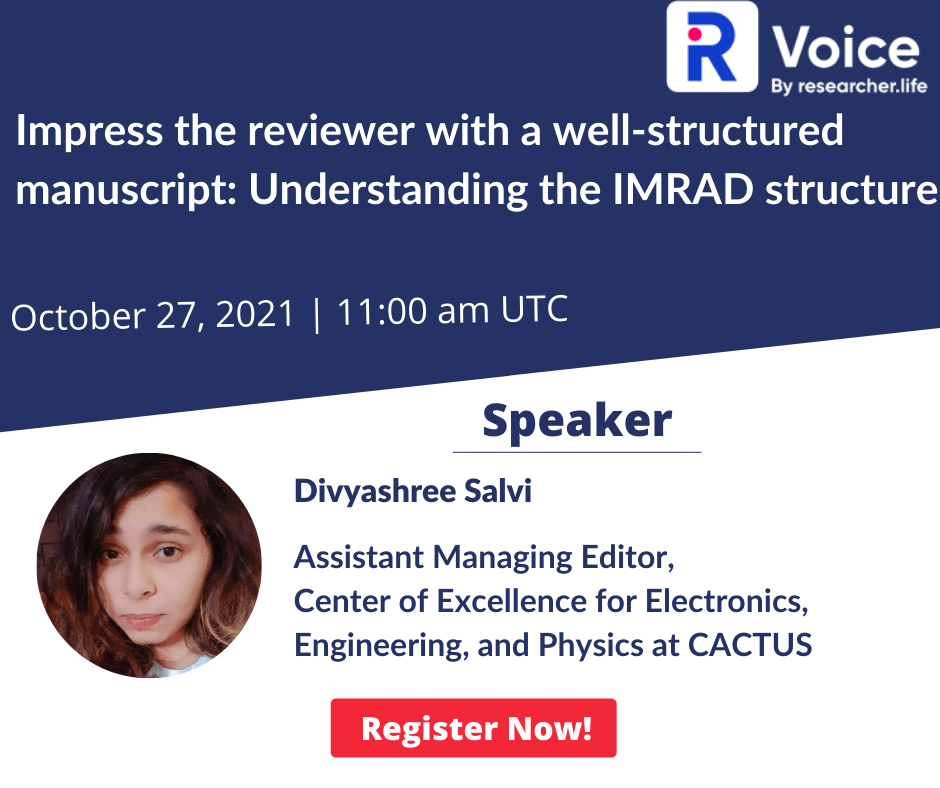
When writing a journal article, researchers often struggle to describe their research in a clear, coherent, and logical manner. The clear vision they had while conducting their research somehow translates into a confusing and disorganized piece of writing that does not do justice to the rigorous research and fantastic findings they wish to communicate. What is worse, such articles often fail to even make it to peer review and get desk rejected as they lack clarity and make it hard to editors to understand the crux of the study.
Submitting a well-structured, coherent, and publication-ready manuscript is an author’ best bet to make it to peer review. A manuscript that is well-organized and easy to read creates a great impression on reviewers as it allows them to focus on the crucial task of evaluating the study and validating its findings.
To help you understand how you can organize your ideas effectively into a well-structured manuscript, the R Voice community has invited Divyashree Salvi, Assistant Managing Editor at CACTUS, to give you an in-depth understanding of IMRAD and other structures followed by journal articles to help you identify the format that is best suited for your manuscript.
Free webinar: Impress the reviewer with a well-structured manuscript: Understanding the IMRAD structure
Date: Wednesday, 22nd October 2021
Time: 11:00 am UTC | 7:00 am ET
- An overview of the IMRAD structure and the types of articles it is suitable for
- An explanation of all the elements of IMRAD
- A step-by-step guide on how to write a paper in this format
- A guide to some other effective formats and the article types they are suitable for
- Examples of actual publications to demonstrate how to write well-organized articles using different formats
Register for this R Voice webinar for FREE now
About the speaker: Divyashree Salvi, Assistant Managing Editor

Divyashree Salvi is an Assistant Managing Editor at Editage, CACTUS. She has a background in Mathematics and Physics and extensive experience with editing and reviewing manuscripts from various fields such as theoretical physics, applied mathematics, optics, nuclear physics, astrophysics, and topology. This experience has given Divyashree an excellent understanding of the most effective ways to organize and present research findings in the form of journal articles. She currently manages a team of about 300 editors.




